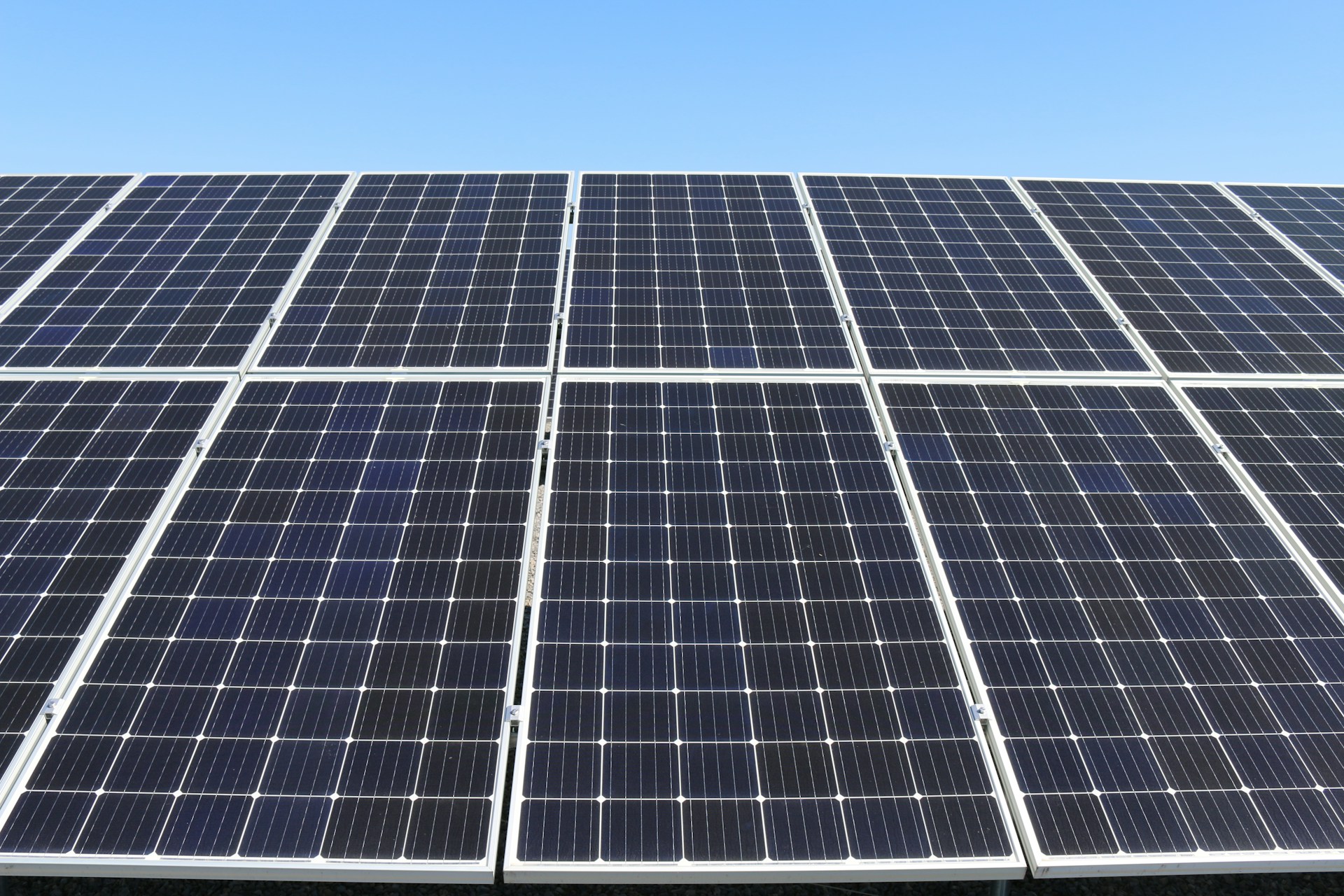What are Perovskite Solar Cells? And how are they Shaping the Future of Solar Energy?
12 Mar, 20248 minSolar technology has seen groundbreaking advancements in recent years as innovators in the r...

Solar technology has seen groundbreaking advancements in recent years as innovators in the renewable energy industry continue to look for new ways to power the planet sustainably. One pioneering technology at the forefront of the future of solar energy is perovskite solar cells. But what are they, how do they work, what advantages do they offer, and how are they shaping the solar energy industry? We’ll explore all the above within this guide.
In this guide, we’ll explore the following:
- What are perovskite solar cells?
- How do perovskite solar cells work?
- Advantages of perovskite solar cells
- Perovskite solar panels pioneering the future of solar energy
What are perovskite solar cells?
Perovskite solar cells are a cutting-edge technology with the potential to shape the future of the global solar energy market. As we delve into these unique solar cells and how the panels work, we must also address the question of 'what is perovskite?'.
Discovered by Gustav Rose, a German mineralogist, in 1839, the term "perovskite" was named in honour of Lev Perovski, a Russian mineralogist. With a formula of CaTiO3, perovskite is a natural mineral of calcium titanium oxide composed of calcium titanate.
Alone, it has limited uses; however, once combined with certain inorganic and organic materials, it can transform into a perovskite semiconductor, making it the suitable foundation for highly efficient solar cells. These solar cells are the building blocks that collectively create solar panels.
Its distinctive arrangement of non-halide perovskites like oxides and nitrides, found in various energy technologies such as fuel cells and catalysts, has been trialled and tested over the past decade to harness solar power. The structure of perovskite can be easily synthesised, making it a frontrunner for the future of solar energy. Its cost-effectiveness and efficiency have been forecasted to play a pivotal role in the next-generation electric vehicle batteries, lasers, sensors, and more.
In 2009, a Japanese scientist named Tsutomu Miyasaka developed the first perovskite solar cell. Initial testing saw the technology generate a relatively low efficiency of 3%. Fast forward to today, immense progress has been made to the point where perovskite solar panels can consistently produce more than 25% efficiency.
For context, silicon is the semiconductor material found in 95% of the solar cells used to make the solar panels you see on the rooftops of buildings today. These traditional materials took 37 years to achieve the comparable 25% efficiencies of perovskite - which, in contrast, took just 15 years.
Additionally, the average efficiency of traditional silicon solar panels is around 22%. Although Longi, a Chinese photovoltaics organisation, recorded the world's highest solar cell efficiency in late 2022, theoretically, silicon-based solar panels could reach a maximum efficiency of 29%.
Later in this piece, in our section, Perovskite solar panels pioneering the future of solar energy, we'll explore whether perovskite solar cells have the potential to showcase greater efficiencies than traditional solar panels.
How do perovskite solar cells work?
Perovskite solar cells are made up of several layers and operate on the principles of the photovoltaic effect, a process where electric currents are generated within a photovoltaic cell once exposed to sunlight - a process similar to traditional solar panels.
When a photon from the sun meets the perovskite absorber layer, the layer is energised and releases electrons, creating electron-hole (e-h) pairs. The released electrons then navigate towards the hole transport layer (HTL), where they progress to the conductor, powering the connected load, which initiates an electric current.
Once the electrons have created the electric current by flowing through the load, the electron transport layer (ETL) in the perovskite solar panel collates them while stopping any undesired backflow of the holes. Occasionally, energy losses can occur in the perovskite solar power process. This happens due to surface recombination, where released electrons recombine with holes instead of participating in the flow of electricity.
The arrangement of layers in a perovskite solar cell can vary. However, the typical configuration of these solar cells resembles a dye-sensitised solar cell (DSSC). The only difference is that instead of a dye anchored to a semiconductor surface, a layer of perovskite material acts as the light-absorbing medium.
Unlike a DSSC, perovskite solar cells remove the need for a thick layer of porous TiO2 to facilitate the separation of hole-electron pairs. This is because the charges generated by the perovskite structure can quickly and seamlessly move away from one another.
Organic molecules known as hole-transport materials are commonly used to transport holes away from the perovskite solar cells. These materials form a thin film above the perovskite layer, allowing the cell to become a solid state, overcoming liquid electrolytes found in DSSCs, which can be prone to leakage.
This innovative design allows for the efficiency and stability of perovskite solar cells. As a result, they're widely considered a promising frontier in the evolution of solar energy technology. Additionally, they're likely to be used for the most significant renewable energy projects in years to come.
Advantages of perovskite solar cells
There are several advantages of perovskite solar cells, making this solar energy technology poised to bring about transformation that could reshape the energy landscape and contribute to a more sustainable future. From its ability to accelerate the global renewable energy transition to the promise of large-scale solar farms, here's a comprehensive look at the potential benefits of perovskite solar panels:
- Significant reduction in CO2 emissions:
Eliminating oil from the global energy consumption equation would mark a seismic shift in the fight against climate change. Transitioning 50% of global energy to solar power, facilitated by perovskite solar cells, could cut over 15 billion tonnes of CO2[4] worldwide. The inherent small size of perovskite cells contributes to material efficiency, potentially saving millions of tonnes of CO2 in the production process, making them a sustainable choice for a greener future.
- Cost-effectiveness over time:
While acknowledging the initial higher costs of perovskite cells, research by Dr Chris Case, chief technology officer at Oxford PV, underscores their long-term economic benefits. Despite an upfront cost increase of 20 - 40%, perovskite cells are projected to be more economical in the long run. Their enhanced return on investment and potential higher energy yields positions them as a financially attractive option, encouraging widespread adoption.
- Innovation in solar panel design and integration:
Perovskite solar cells offer avenues for innovative solar panel design and integration. With high charge-carrier mobility and long diffusion lengths, these cells enable the development of aesthetically pleasing lightweight and thin solar panels.
The colour-adjustable nature of perovskite cells allows for customisation, making them suitable for various applications, including building-integrated photovoltaics. This flexibility and adaptability can contribute to increased consumer acceptance and adoption.
- Research and development potential:
Further research and development in perovskite solar cells showcase impressive progress, with efficiencies exceeding 30%, outpacing traditional silicon solar cell technologies. The ease of synthesis in the lab allows for rapid exploration of potential compositions, and advancements in machine learning are helping to streamline the discovery of new perovskite formulations, potentially accelerating their development.
- Promise for large-scale solar farms:
Despite durability challenges, particularly in comparison to silicon panels, perovskite's potential for a usable lifetime of at least a decade could make them economically viable for large, utility-scale solar farms. Once the durability hurdles are overcome, perovskite solar cells could offer a cost-effective alternative to silicon, potentially transforming the capabilities of solar energy on a massive scale. In turn, this could foster future solar jobs.
Perovskite solar panels pioneering the future of solar energy
In recent years, the innovative approach to harnessing solar power with perovskite solar panels has captured the attention of researchers, industry experts, and environmentalists alike, promising to reshape the renewable energy industry. Perovskite solar panels have garnered significant attention due to their remarkable efficiency improvements.
According to a report by The Independent, these solar panels have demonstrated impressive efficiency gains in the UK, reaching levels that were previously thought unattainable for traditional photovoltaic technologies. Their findings revealed how South Korean PV manufacturer Qcells is said to invest $100 million into perovskite solar cells, with the belief the solar technology could generate newfound efficiencies of 50 - 75% compared to traditional solar panels.
In a recent breakthrough highlighted by TechXplore, Northwestern University researchers have achieved a heightened efficiency of over 25% in inverted perovskite solar cells. The inversion design has proven to enhance the overall performance of these solar cells, pushing the boundaries of efficiency even further. The continual push for efficiency gains underscores the commitment of scientists and engineers to unlocking the full potential of perovskite technology.
Moreover, in May 2023, Oxford PV achieved a world record-breaking efficiency level for a commercial-sized tandem solar cell, reaching efficiencies of over 28%. For context, tandem solar cells arrange or stack multiple solar cells in one to convert more energy from the sun. This significant milestone is a step closer to the commercial viability of perovskite solar panels.
Furthermore, the integration of perovskite-silicon tandem solar cells has opened new frontiers in efficiency potential. PV Magazine also reported that this tandem approach has demonstrated a practical efficiency potential of 39.5%. This promising development, achieved by researchers from the German-based Fraunhofer Institute for Solar Energy Systems (Fraunhofer ISE), holds immense significance, as it signals a pathway to achieving unprecedented levels of efficiency in solar energy generation.
Final thoughts on the rise of perovskite solar cells
Overall, perovskite solar panels are undeniably shaping the future of solar energy. Perovskite solar cells present a promising avenue for increasing efficiency, lowering costs, and offering a range of practical and innovative applications. While challenges remain, ongoing research and development indicate a bright future for perovskite technology in shaping the solar energy industry and contributing to a sustainable future for renewable energy.
Looking to grow in the renewable energy industry?
With over two decades of experience as a global leader in the renewable energy space, we stand at the forefront to assist innovative organisations and top-tier talent in advancing within the renewable space, including the solar industry. Our team of consultants specialises in facilitating success for clients and candidates engaged in some of the most cutting-edge solar energy projects across the globe.
Whether you're searching for talent acquisition services to connect with the finest professionals in the market, poised to propel your company's growth, or you're a candidate eager to register for the latest solar jobs to advance your career in renewable energy, we have the solution for you.
For more information on how we can support you, contact us today.









